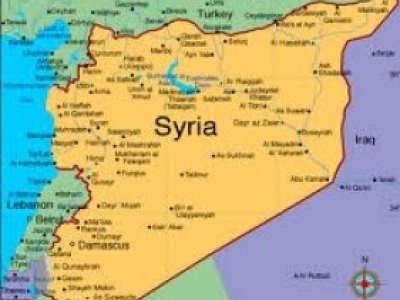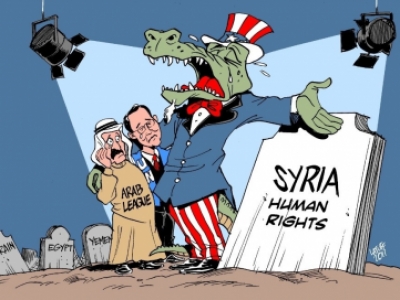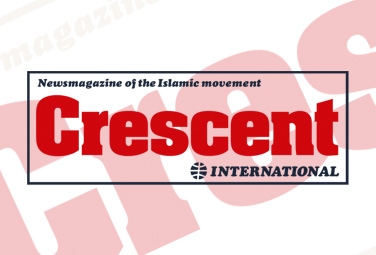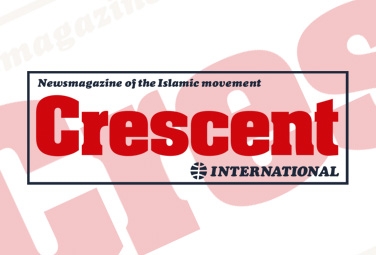Analysis of Syria’s military landscape
Empowering Weak & OppressedCrescent International
Rabi' al-Awwal 16, 1434 2013-01-28
Daily News Analysis

On the political front the US backed “opposition” is in even worse shape.
Toronto,
January 28, 2013, 07:20 EST
A clear-headed assessment of the military landscape in Syria shows that if the US proxy-war goes on, there will be no clear military or political winners in Syria except NATO and Israel.
The military scenario in Syria shows that the main battles are fought around police stations, airbases, military bases, train stations and government offices. The fight is around infrastructure, not territory. We rarely hear about rebel-initiated operations to capture cities or regions because they do not have the military muscle to capture or hold onto large chunks of territory. If Syria were the size of Chechnya, then the capture of a police station, airbase or village would be a significant military development, but Syria is not a small country. Capturing or destroying state centres of power does not dramatically change the balance of power.
It is evident that US proxy forces are not ready to run a state in any shape or form. Even the mainstream media is forced to admit that Syrians living under their rule are growing increasingly dissatisfied with their un-Islamic behaviour. Criticism from the masses is becoming more frequent and vocal.
Since the start of the US proxy war in Syria almost every single clash in Damascus and its vicinity was immediately projected as a “major push to capture the capital.” Similar propaganda is being utilized in describing the situation in Aleppo. If one looks only at reports of the mainstream media, even they do not dare to claim that the armed gangs control more than 50% of Aleppo.
Paying attention to the inconsistency of the informational war against Syria reveals that the military option of ousting Bashar al-Asad anytime soon is unlikely to materialize. On January 25 mainstream western media reported that the Syrian army brought reinforcements to the province of Homs and launched an offensive aimed at retaking territory held by rebels for months.
This indicates that the Syrian military is nowhere near collapse as the US-cobbled Syrian “opposition” has repeatedly claimed from its five star hotels in Qatar and Turkey.
The western corporate media also trumpeted the January 11 capture of the Taftanas airbase in Idlib by the takfiri wing of the US proxy forces as a “major achievement.” But from a military point of view, capture of the Taftanas airbase was not a “major” achievement at all. Most of Idlib province had fallen into the hands of US proxy forces several months ago. The base itself was surrounded for at least two months. Strictly from a logistical point of view and taking into account the foreign arms the rebel groups in Syria receive from abroad, they should have captured the base a long time ago.
The fact that it took them several months to capture the airbase located within territory that they held for so long reflects the commitment of the Syrian army to defend the ruling system and shows the incompetence of the armed gangs fighting against the Syrian government.
Reporting from Syria in December 2012, journalist Patrick Cockburn described the military landscape in the following words; “I drove 160 kilometres north to Homs, Syria’s third largest city with a population of 2.3 million, without difficulty. Homs, once the heart of the uprising, is in the hands of the government, aside from the Old City, which is held by the FSA. Strongholds of the FSA in Damascus have been battered by shellfire and most of their inhabitants have fled to other parts of the capital. The director of the 1,000-bed Tishreen military hospital covering much of southern Syria told me that he received 15 to 20 soldiers wounded every day, of whom about 20 per cent died. This casualty rate indicates sniping, assassinations and small-scale ambushes, but not a fight to the finish.”
On the political front the US backed “opposition” is in even worse shape. For instance, on January 24, France admitted that Western plans to occupy Syria are not going well. The US backed autocrat in Jordan king Abdullah said on January 25 from Davos, “anyone who says that Bashar’s regime has got weeks to live really doesn’t know the reality on the ground.” A day later Dr Ali Akbar Velayati, an adviser to the Rahbar, confirmed that Islamic Iran will continue supporting Syria against Israeli and US aggression. He also said attacking Syria was a red line for Iran and it would not allow it to happen.
It appears that those who are financing the militants in Syria have realized the folly of their project and are slowly trying to retreat. The only ones that cannot afford to lose in Syria are Israel and its strategic partner, the House of Saud. This is probably the main reason why on January 26 during a speech in Davos, Prince Turki al-Faisal, a former Saudi intelligence chief and brother of the Saudi foreign minister, openly called for arming the gangs in Syria. However, his call is likely to further discredit the Syrian opposition, as the Saudis have never called for arming the Palestinians to defend themselves against decades long Zionist aggression. The Syrian opposition has clearly chosen wrong allies.
In case the government in Damascus falls, the world will only witness the change of roles. The government will become the rebels and the rebels will become the “government.” The war will last for at least another decade and insure that the Islamic resistance (Iran, Hzibullah, Hamas and Islamic Jihad) does not utilize Syria as a logistics center in resisting Israel. The fall of Bashar al-Asad will benefit no one except the imperialist powers. Do people still wonder why the conflict in Syria is increasingly referred to as a proxy-war?
END




